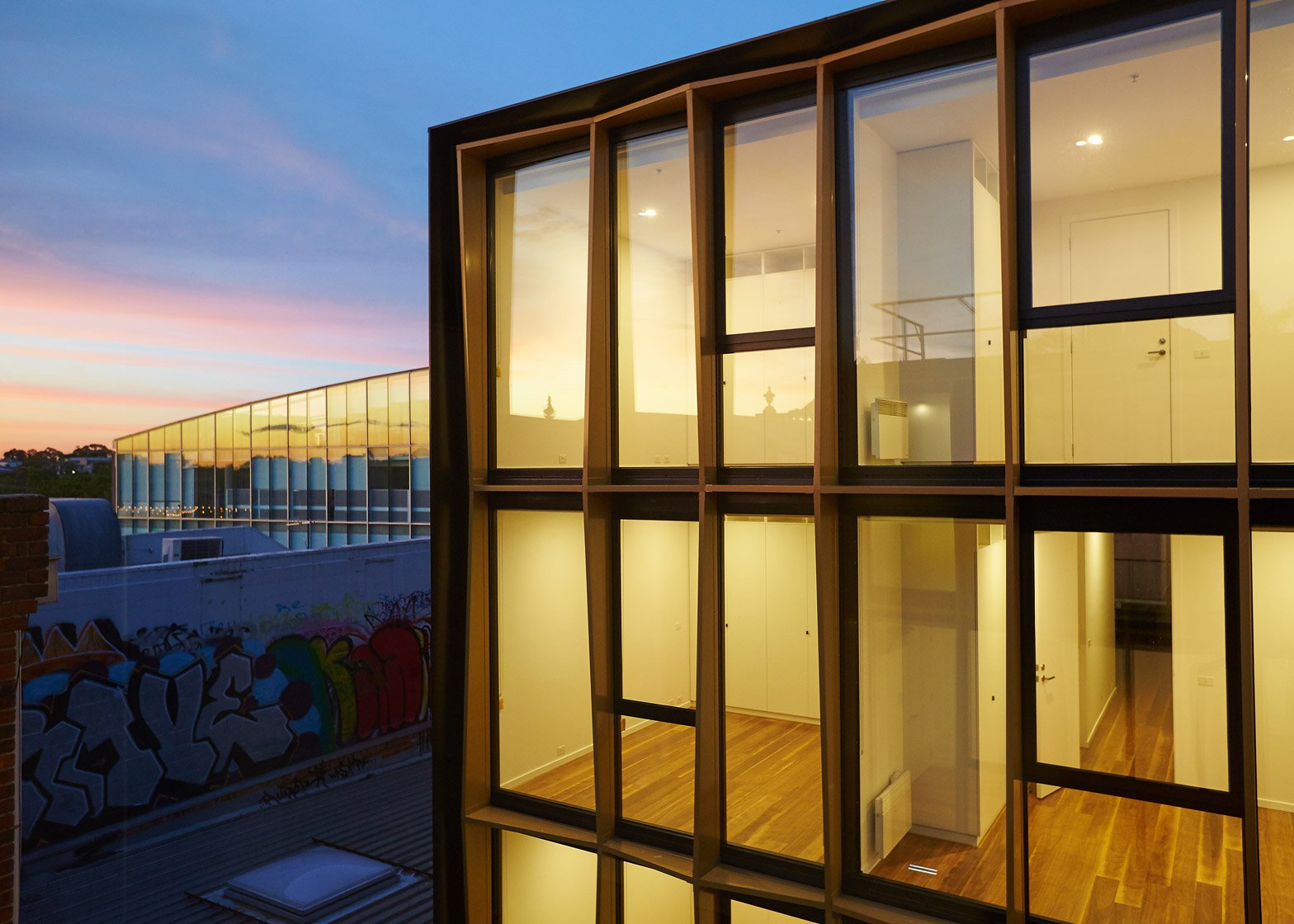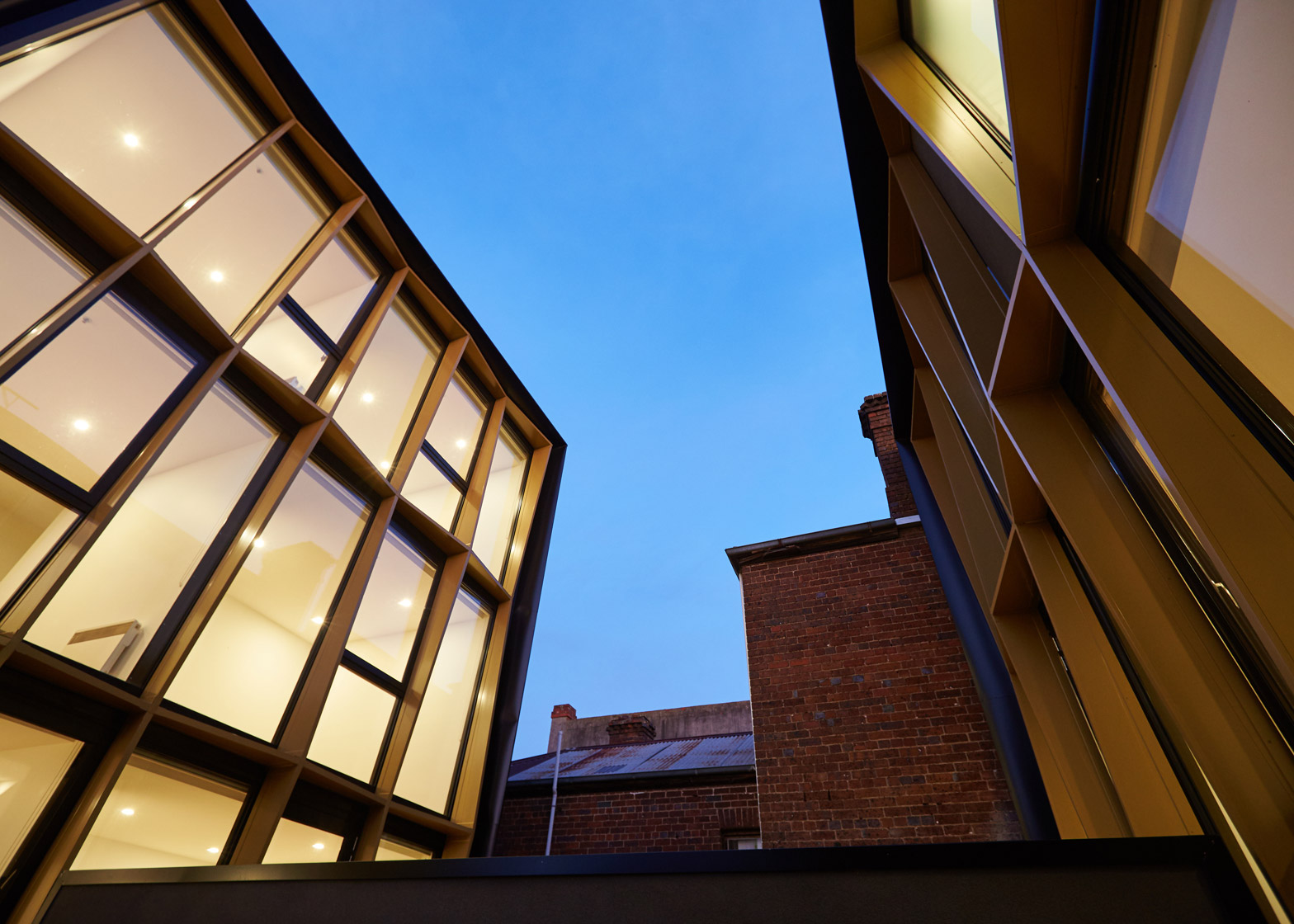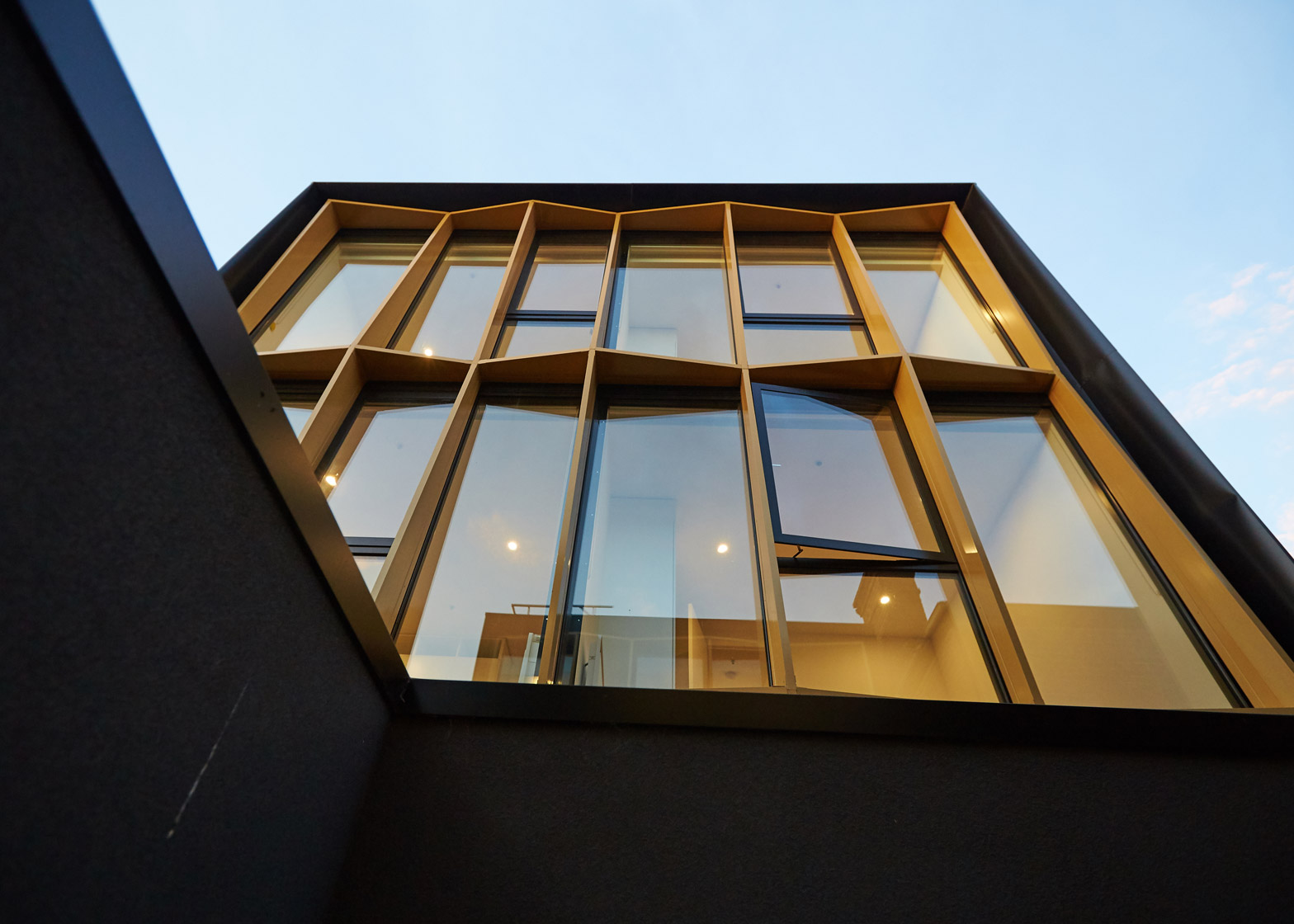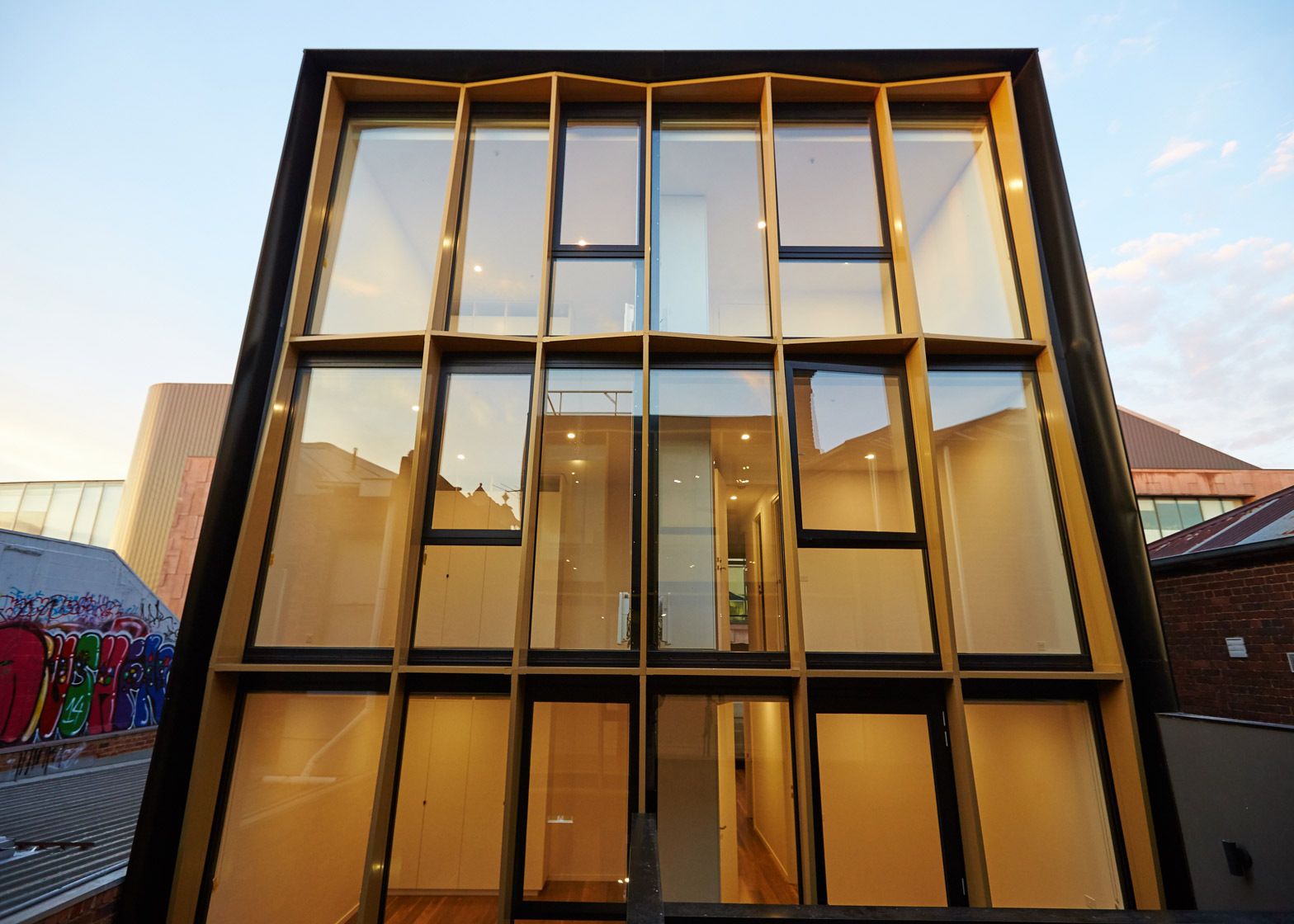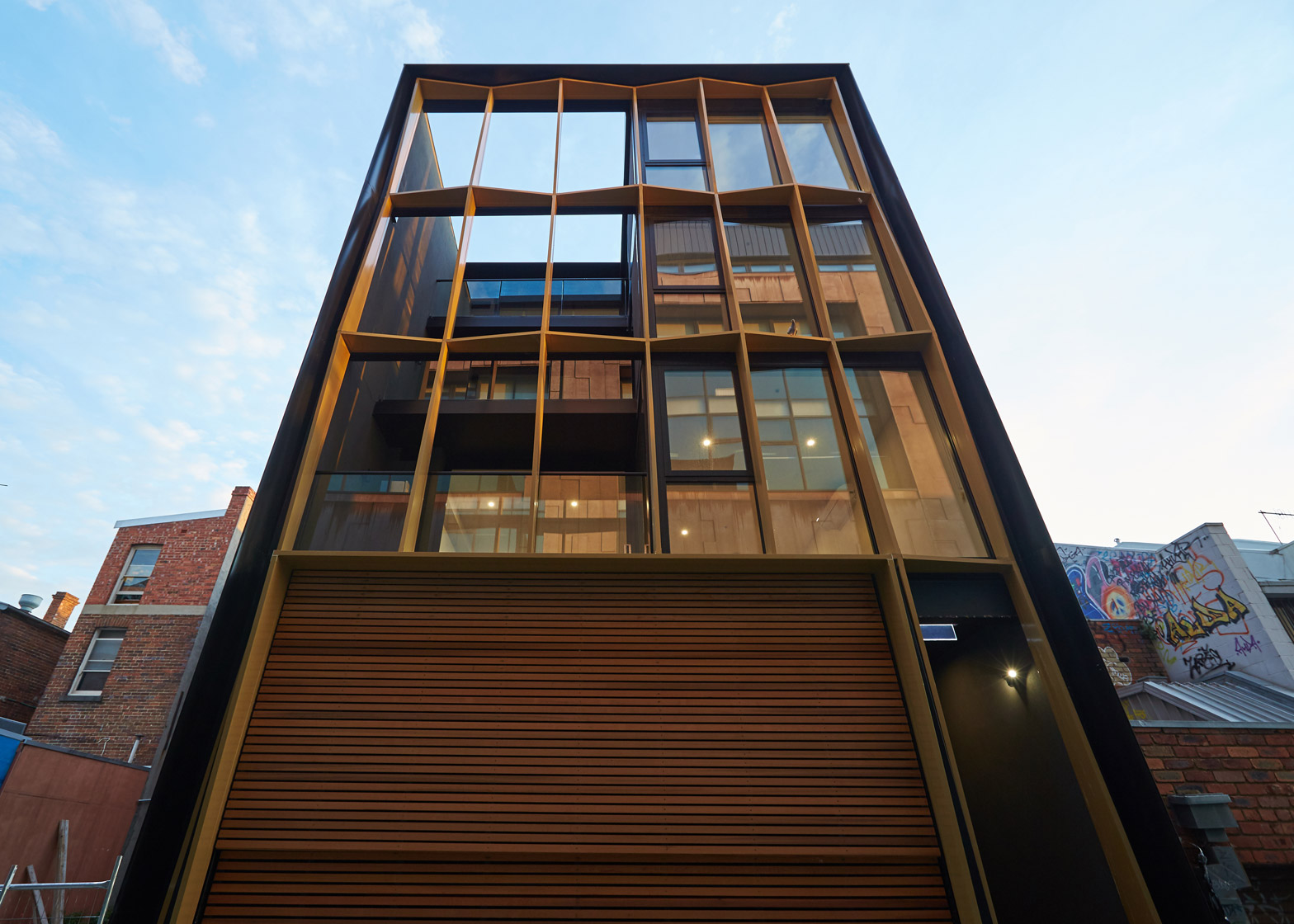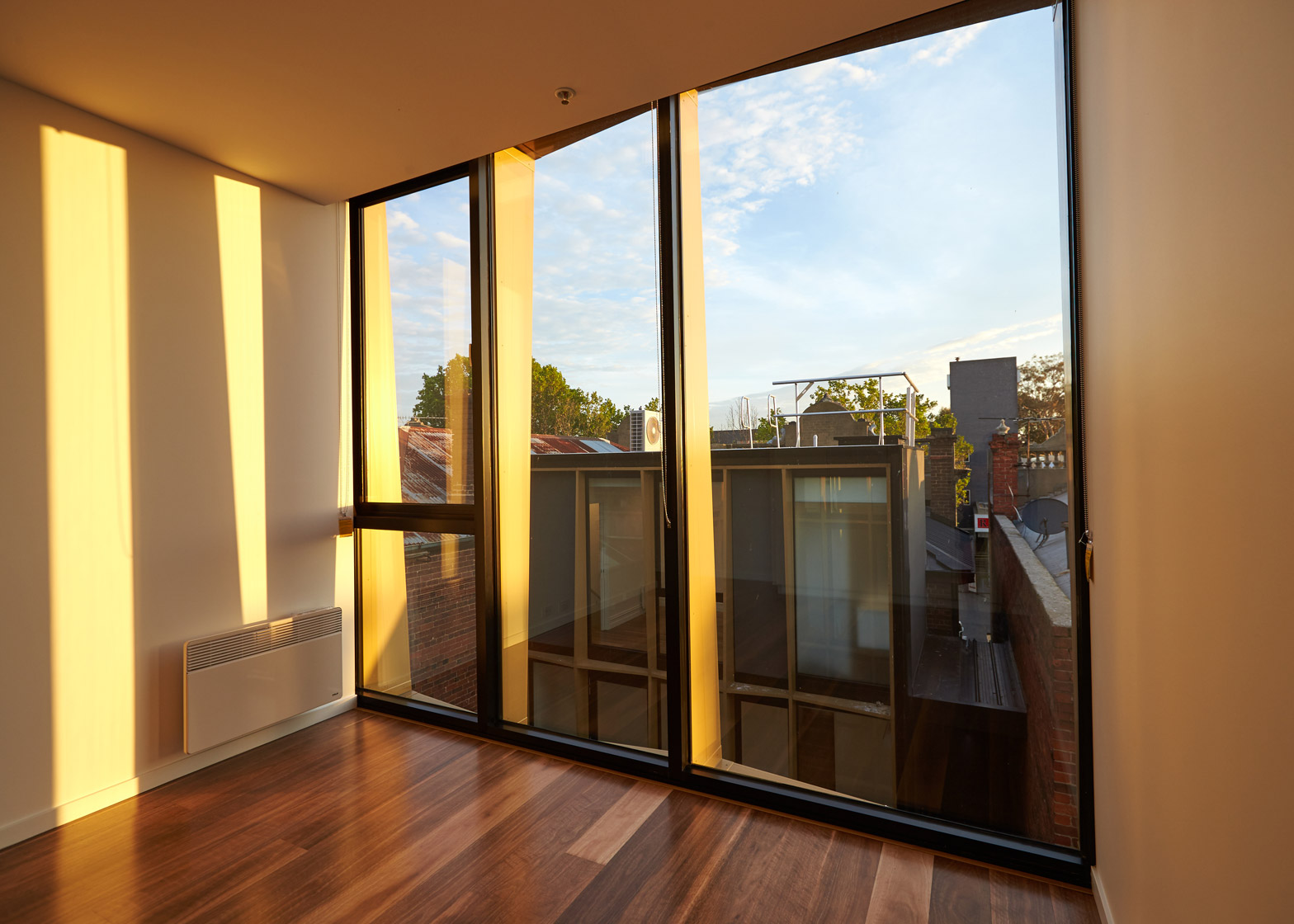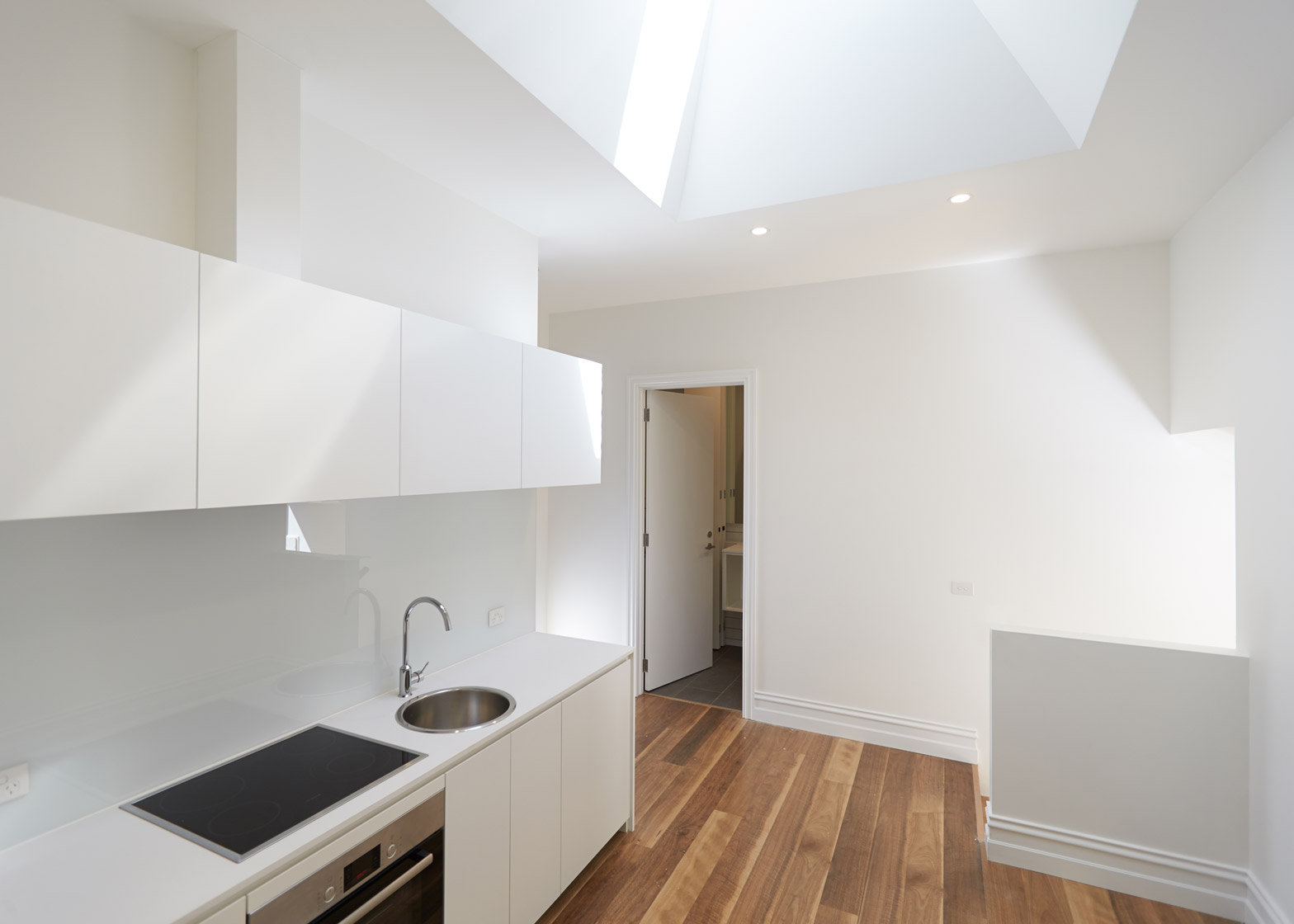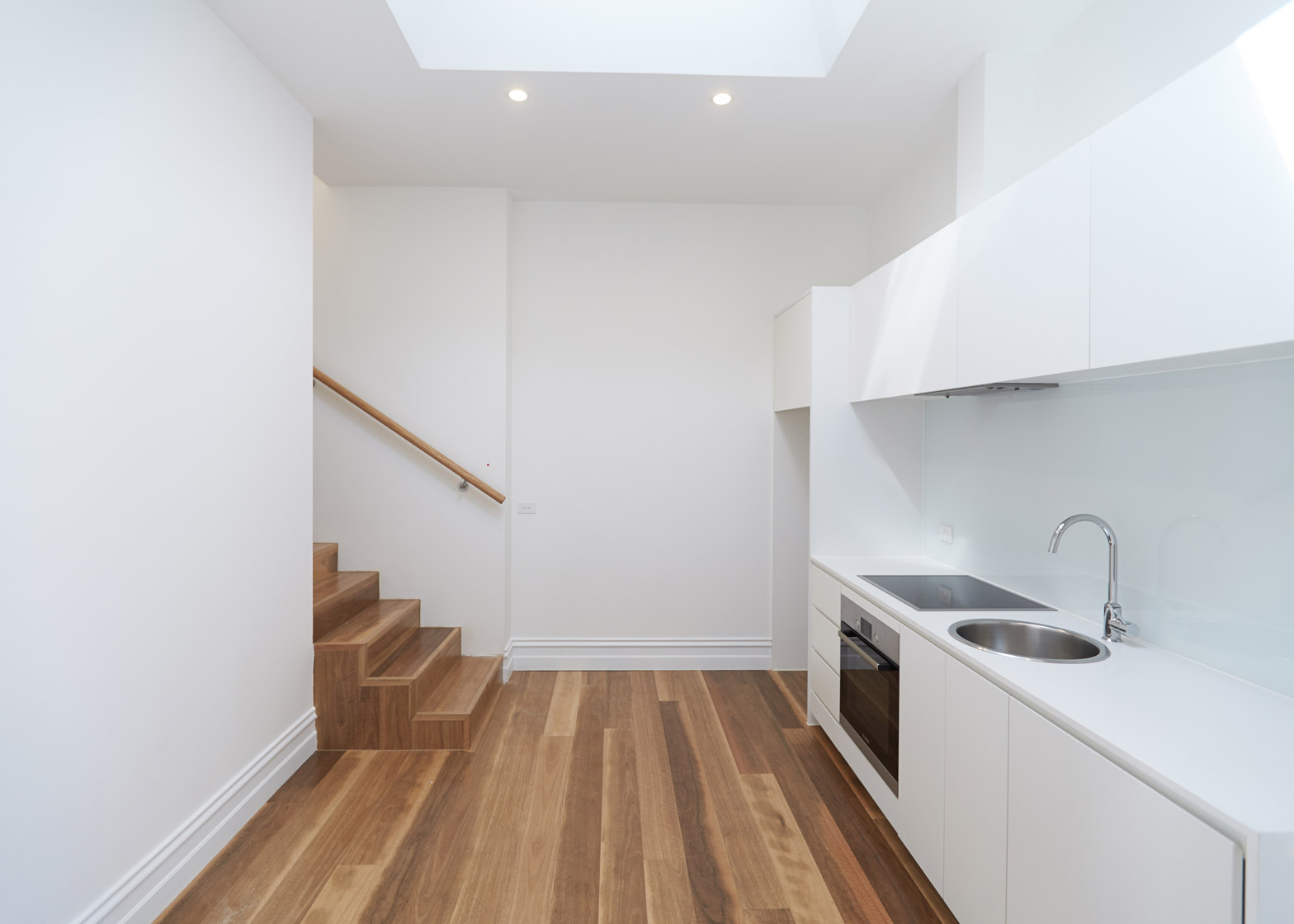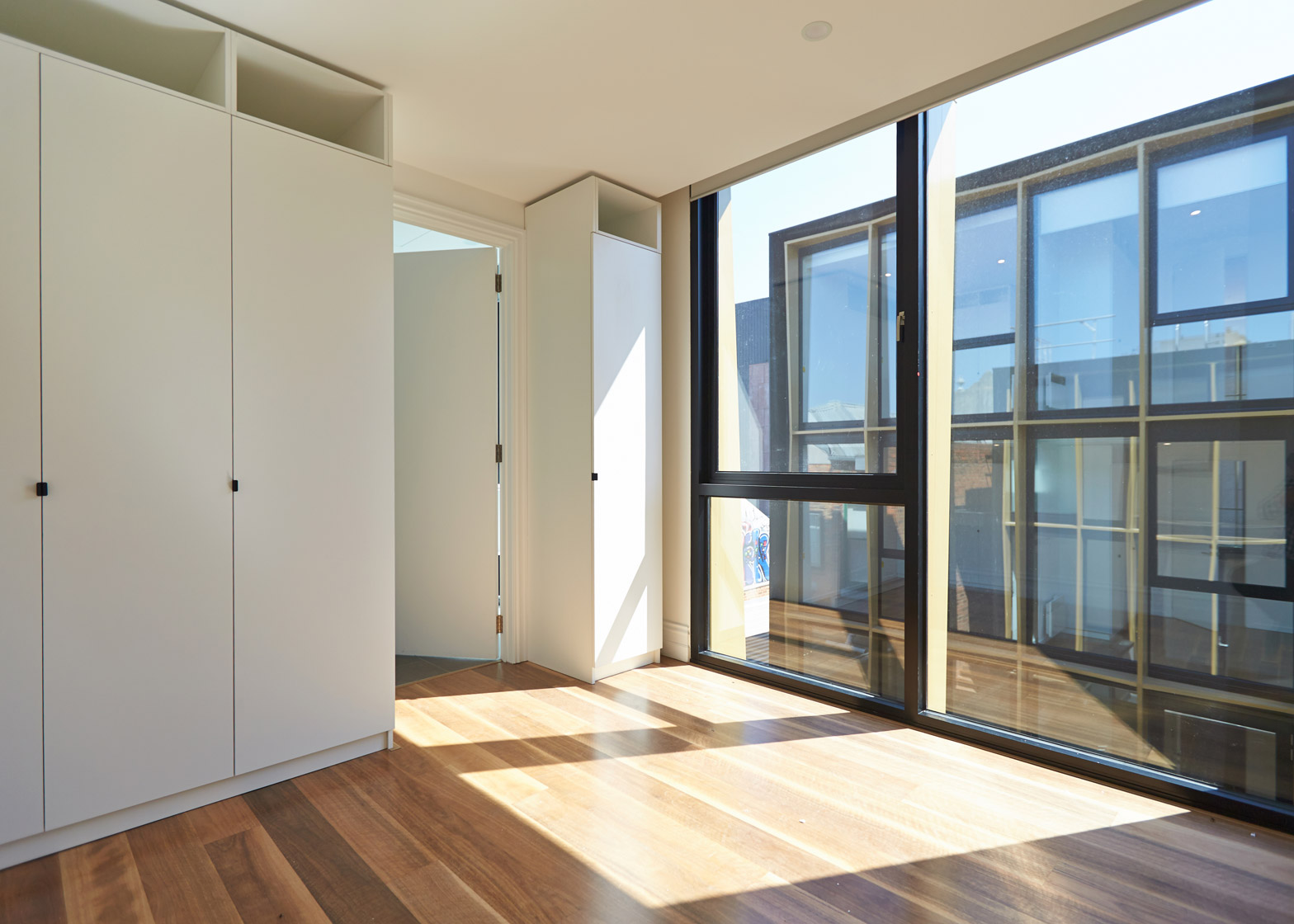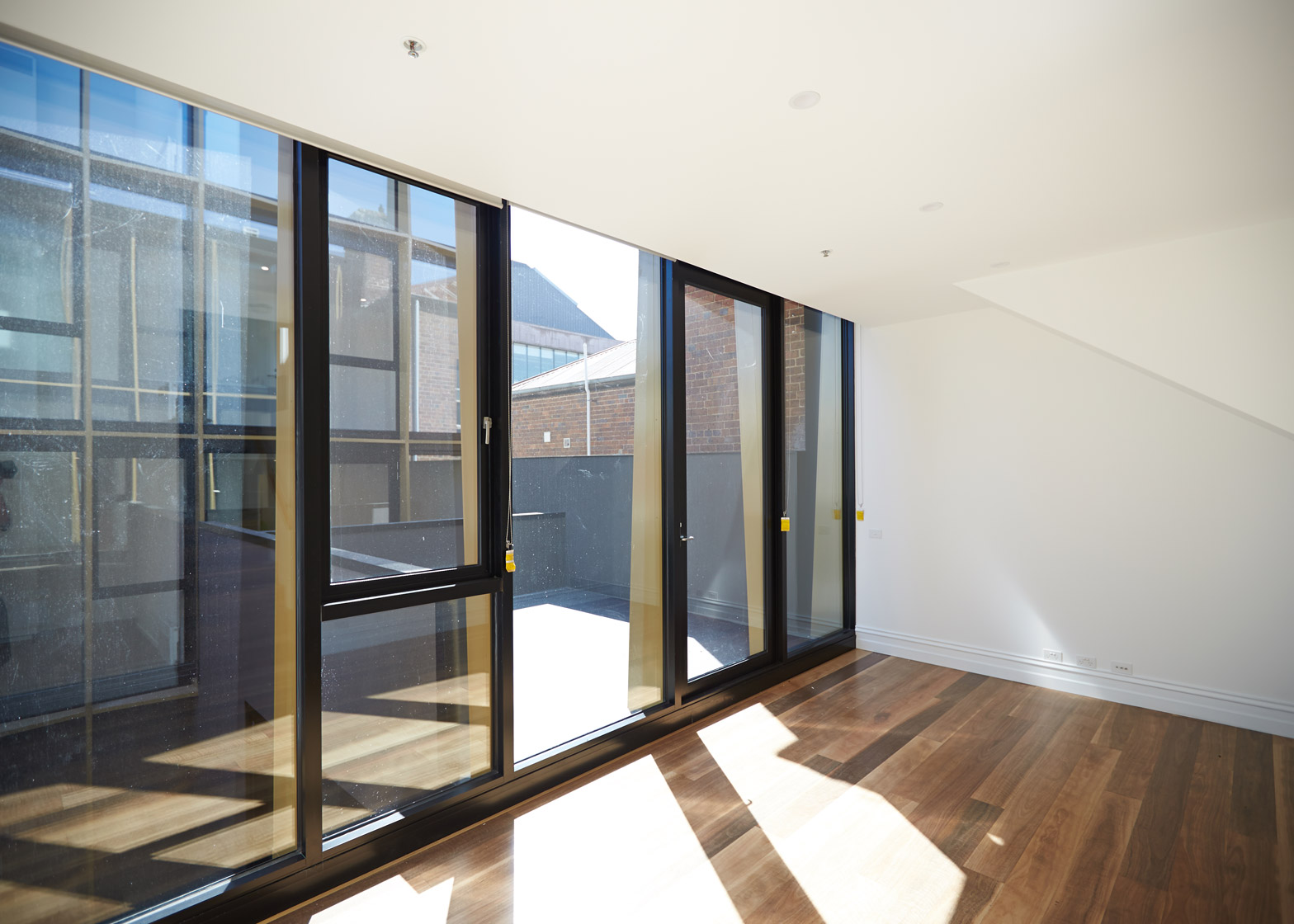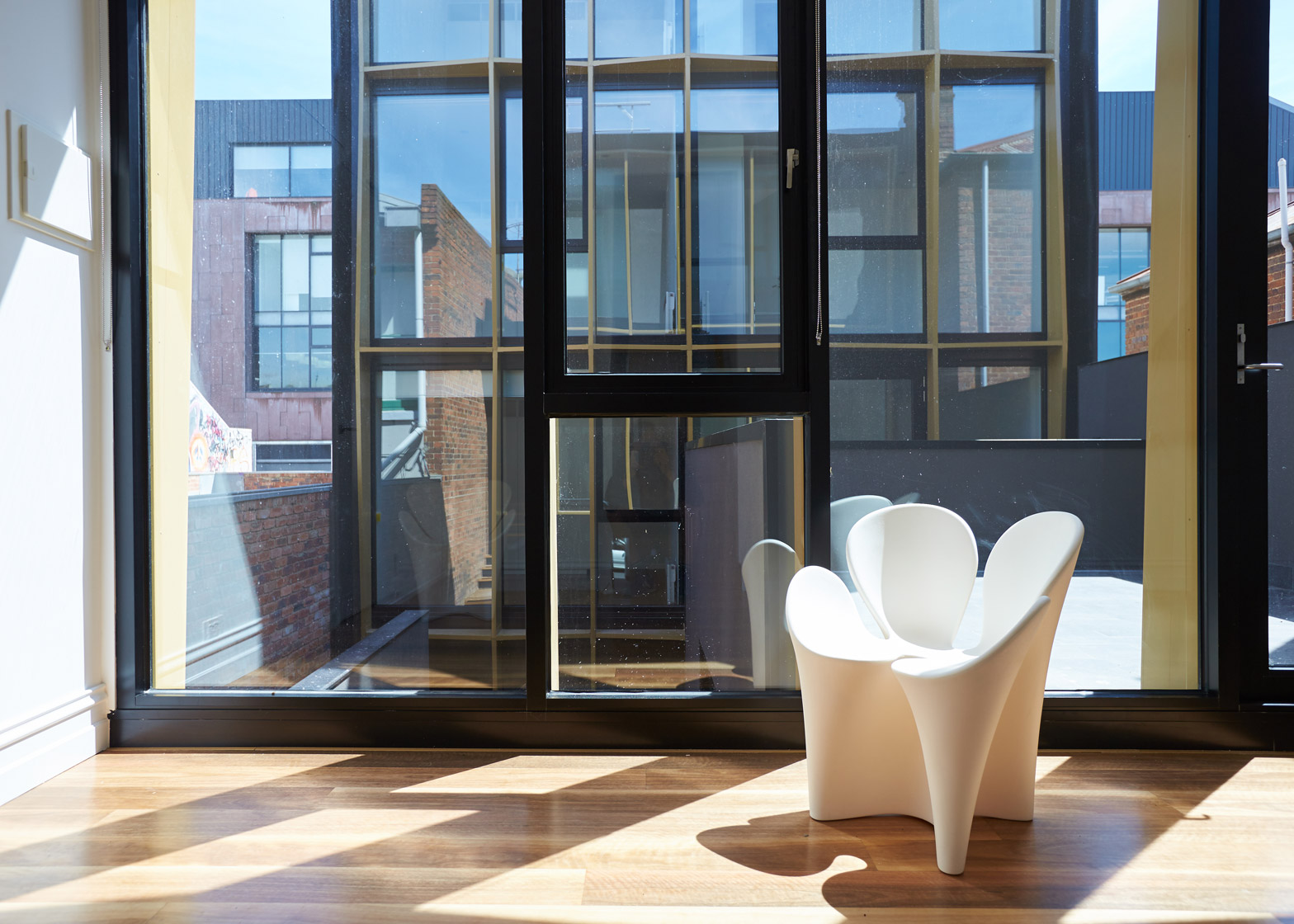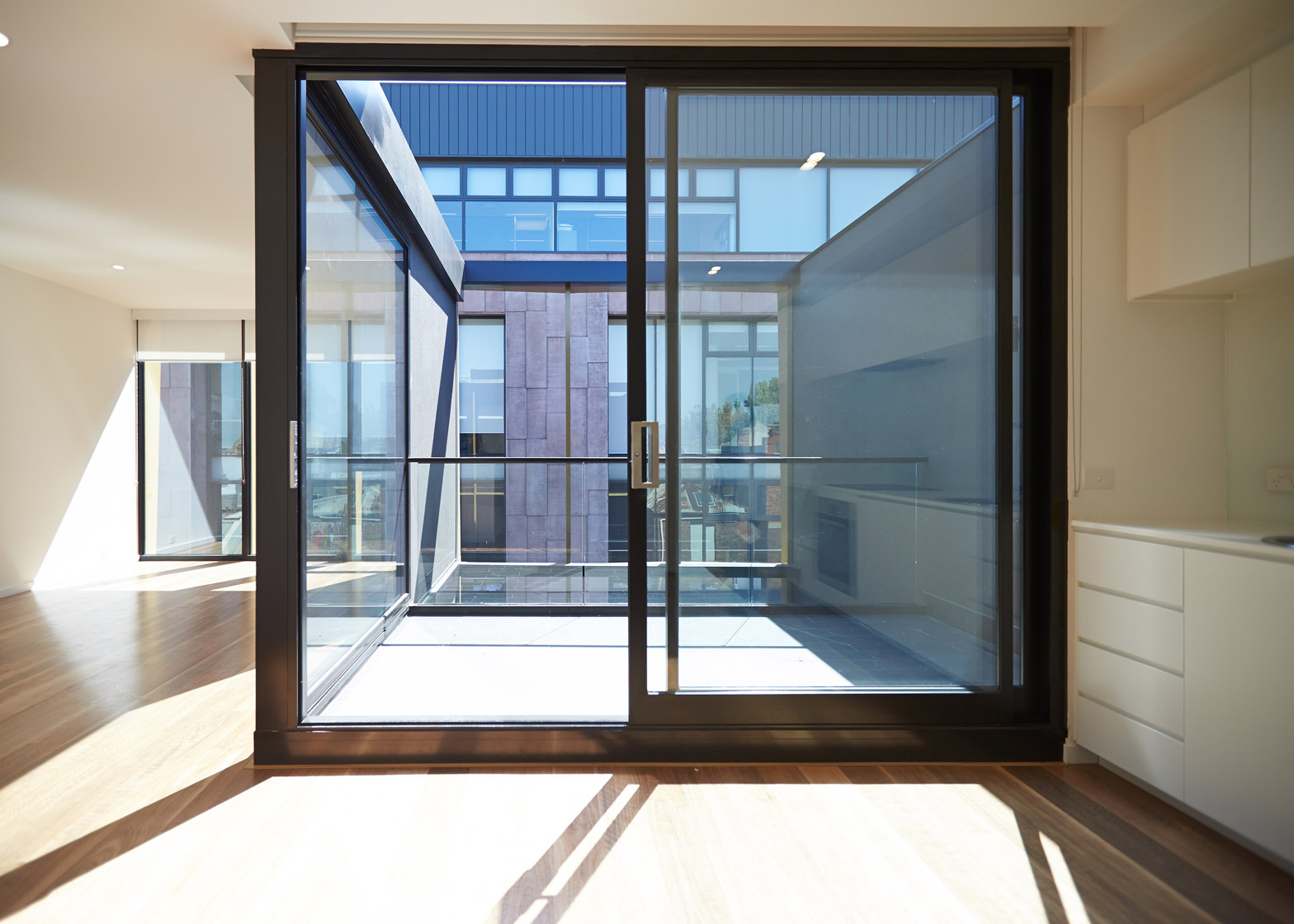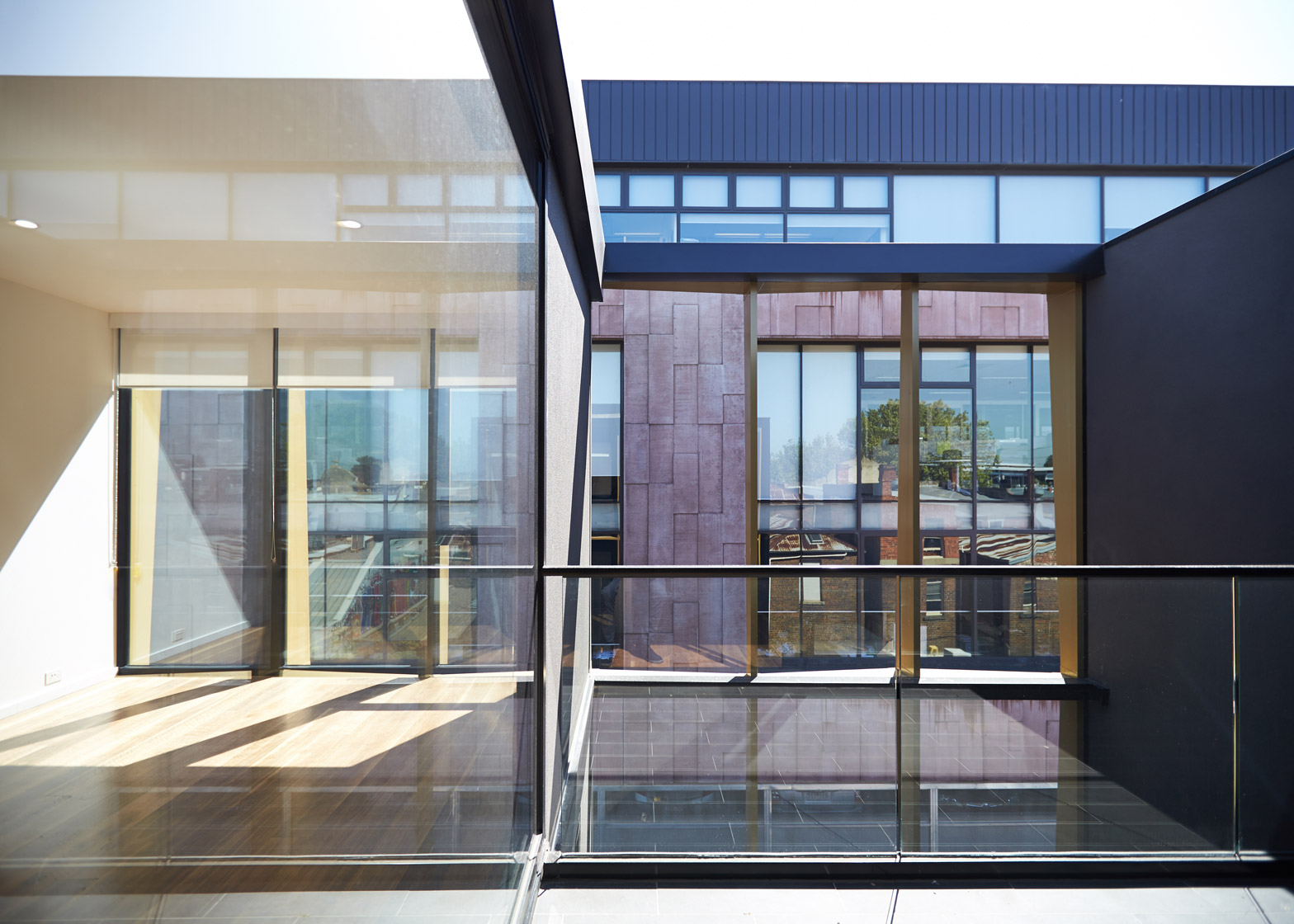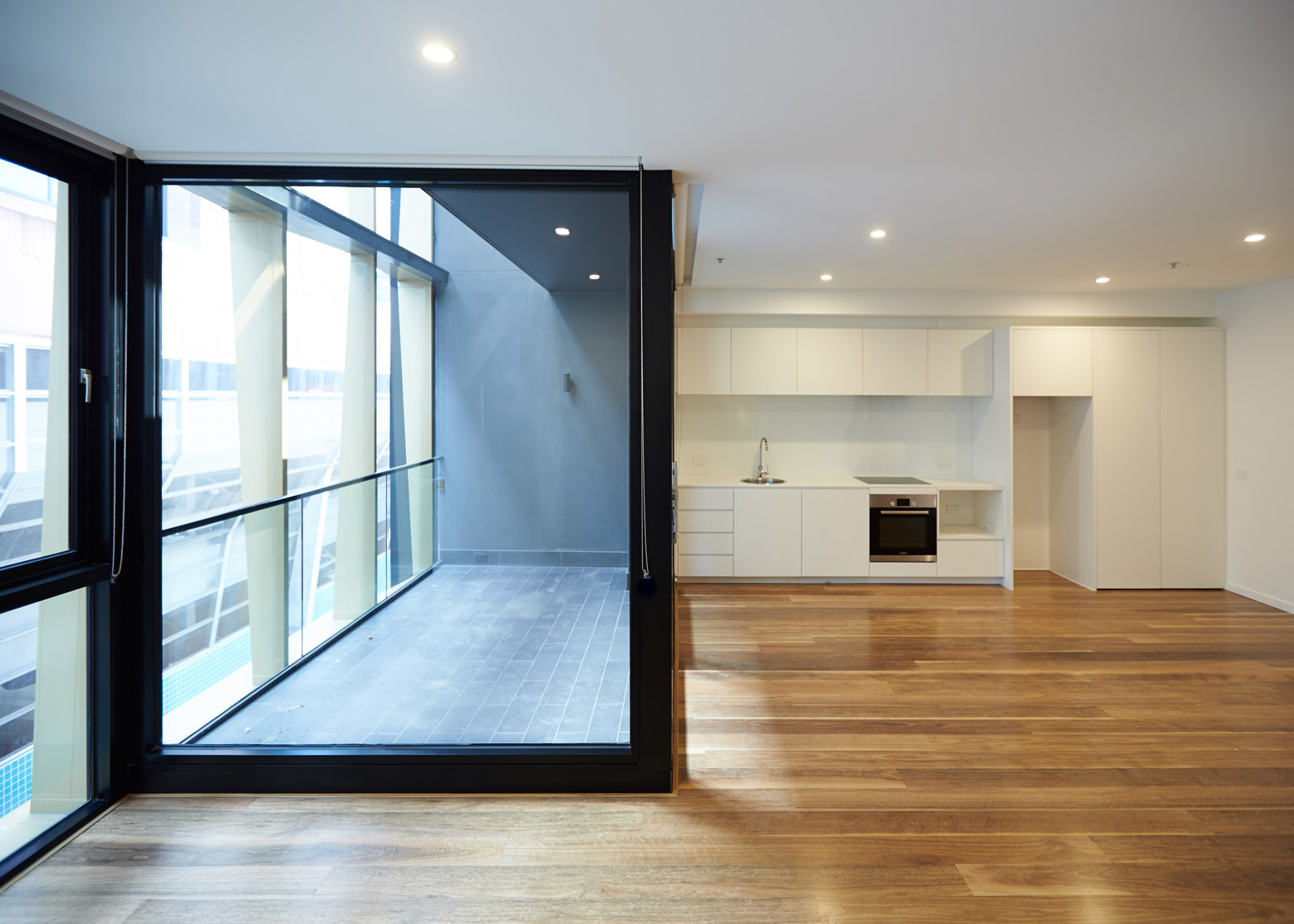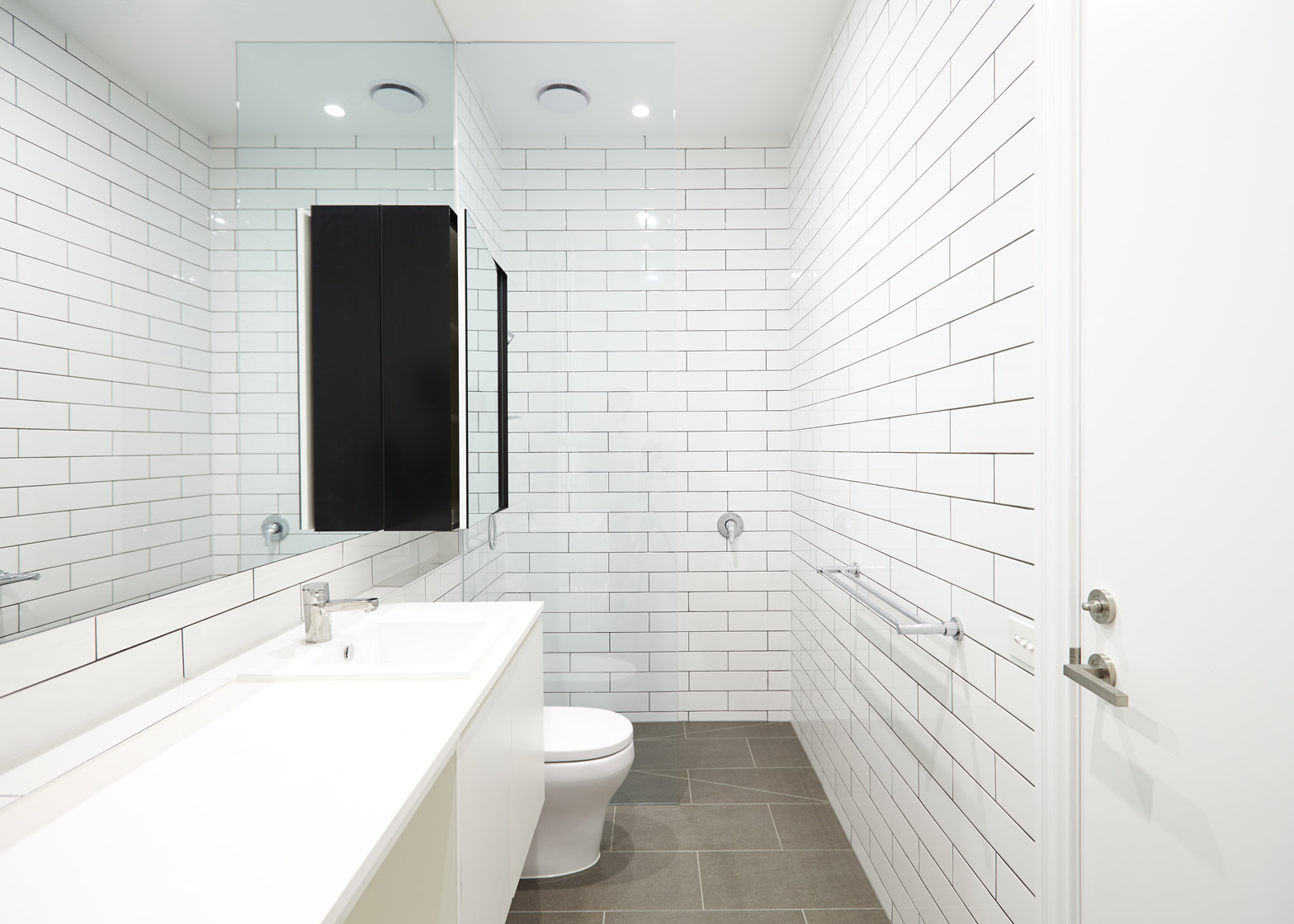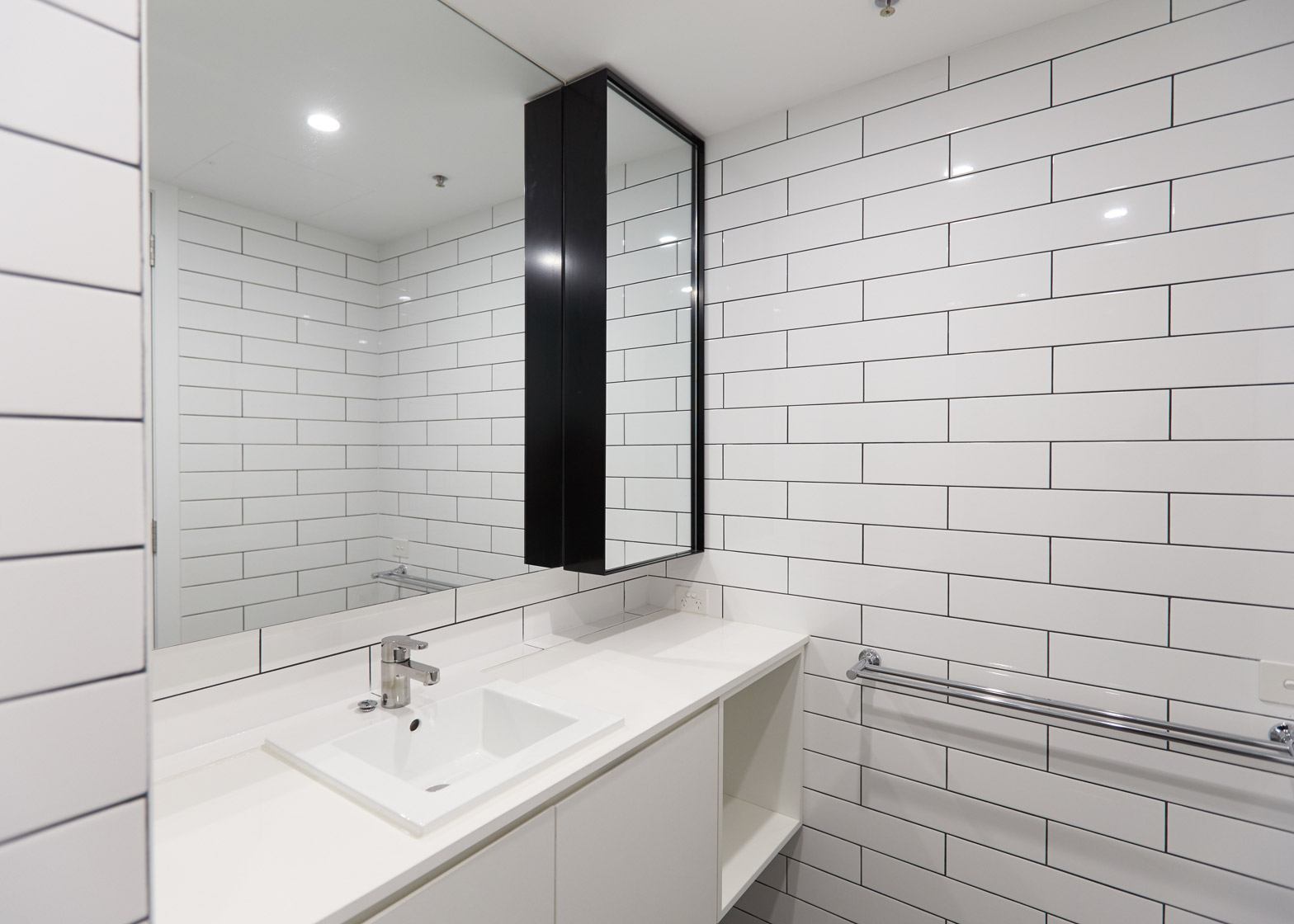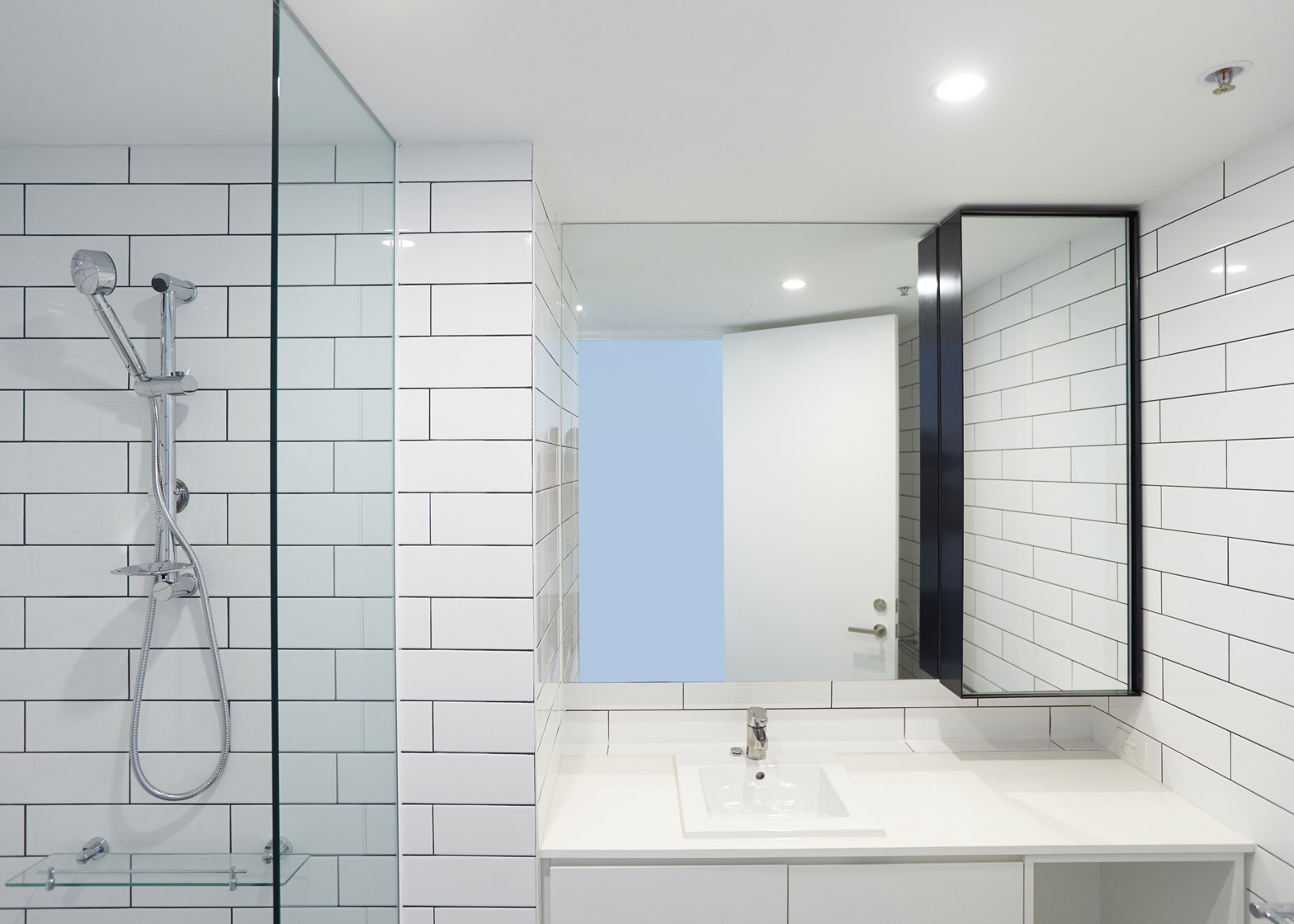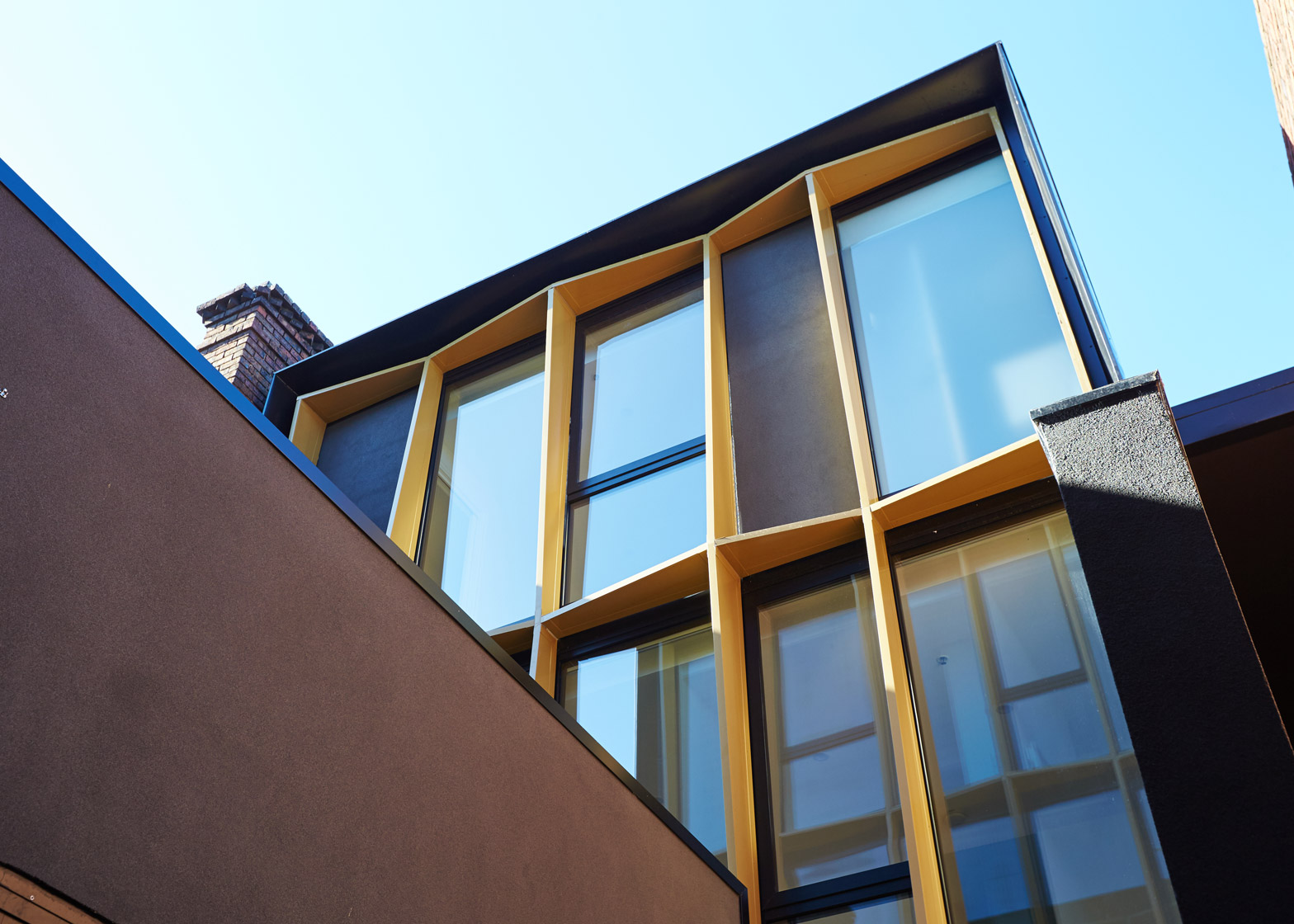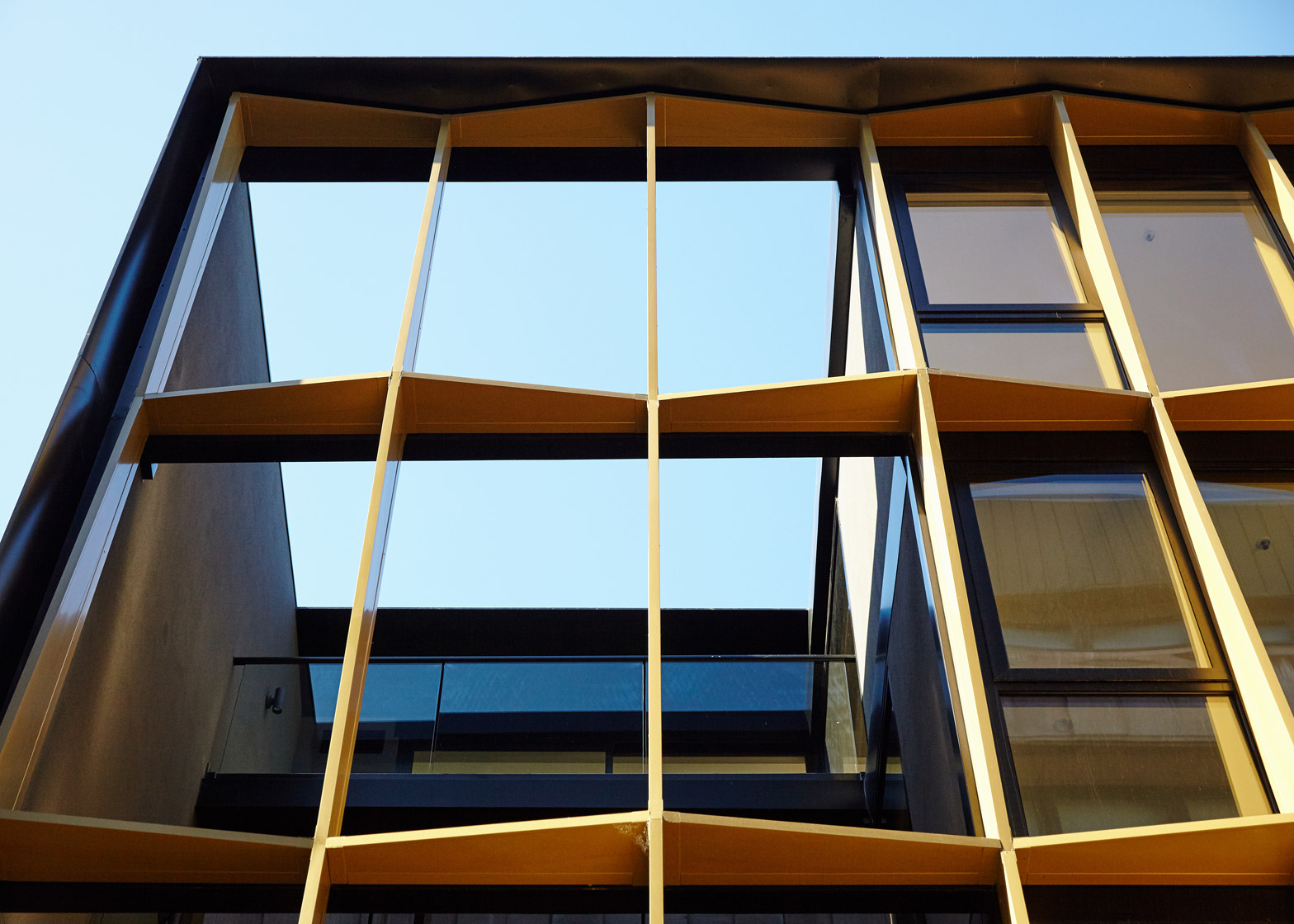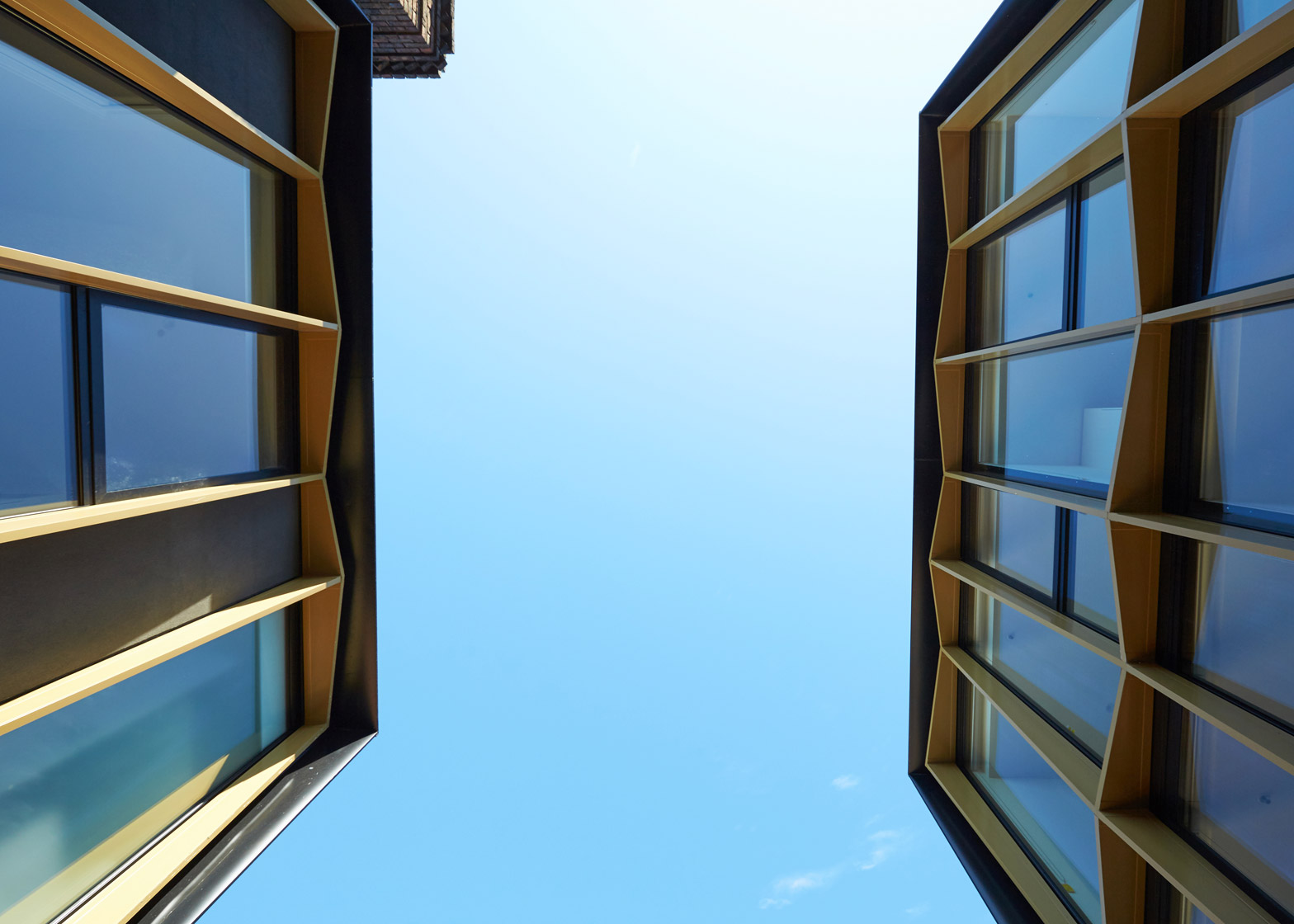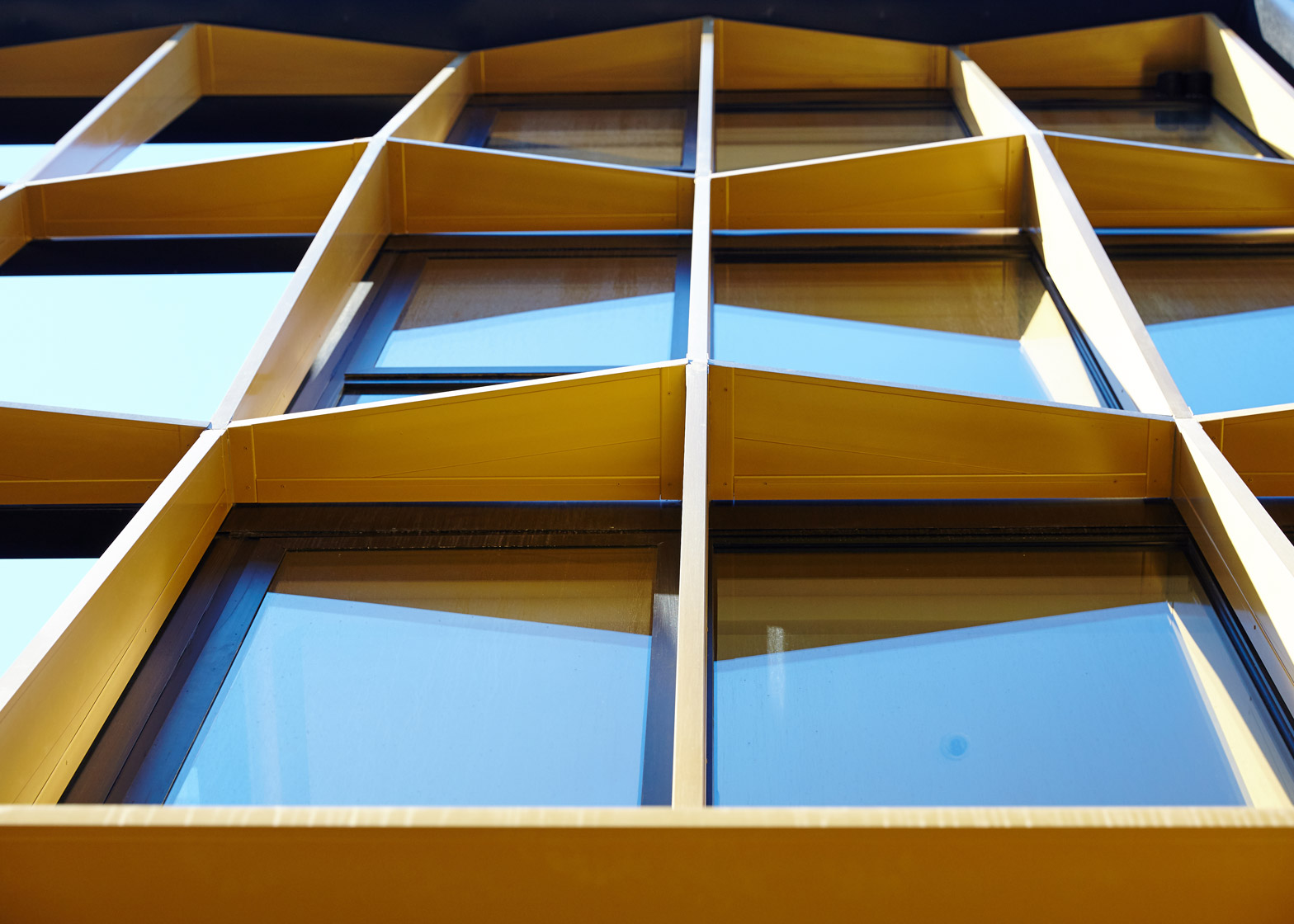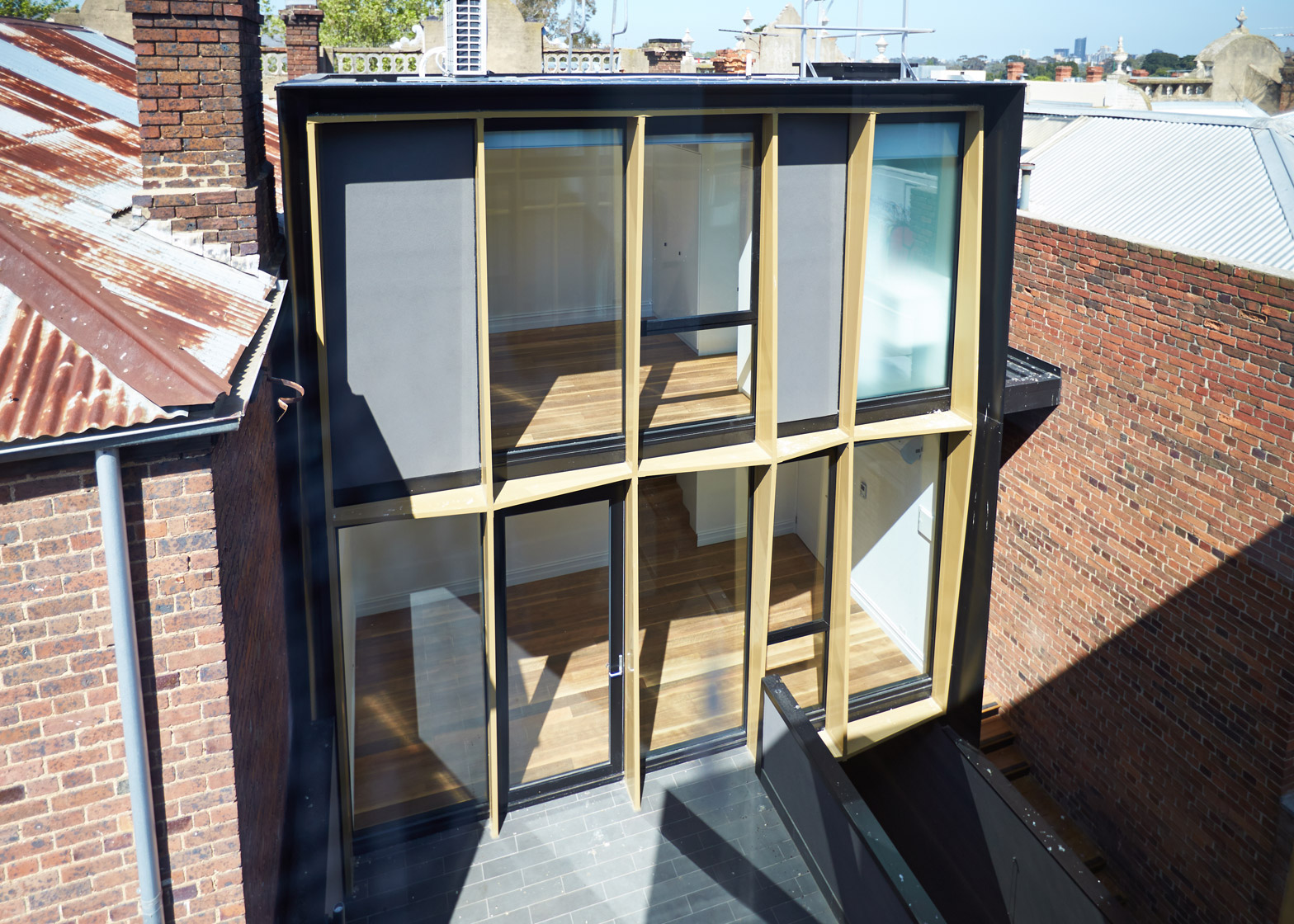Zigzagging golden frames surround the facades of this apartment complex by DROO Projects, which is tucked behind a row of 19th-century shops in Melbourne's Hawthorn suburb (+ slideshow).
Paris- and London-based DROO Projects was asked to redevelop one unit in the row of shops, which dates back to the Victorian era, and to redevelop the narrow site to its rear.
The heritage-listed building was operating as an Indian restaurant, and needed to be gutted and extended to form a new shop at ground level with a duplex apartment above.
A further four-storey block constructed to the rear hosts three apartments and a ground-floor car park.
The glazed facades of both blocks – collectively known as the Boutique Apartment Building – are covered in a grid of golden aluminium fins.
These wedge-shaped profiles help to provide shade from harsh sunlight and offer a degree of privacy from neighbouring apartments.
"The fins are designed to add warmth to the dark black surfaces," said studio founder Amrita Mahindroo.
"The faceted design adds privacy to the glazing when seen from the street and from an angled view, whilst maintaining great views and light from within the apartment," she told Dezeen.
The two "mini towers" are separated by a stepped courtyard that helps to bring natural light into both buildings. It also provides a secluded outdoor space for residents.
The east-Melbourne suburb is a former brick-making district, and original red Hawthorn brick walls bracket the courtyard.
Australian firm Ola Architecture Studio used the same material for another apartment block nearby, which is also nestled in a strip of old shopfronts.
The courtyard and lobby floors of DROO Projects' apartments are finished with polished concrete to create "minimalist brute surfaces", which contrast the brickwork as well as the slicker finishes of the glass and metal facades.
"When we stripped back the paint and render of the existing building we were able to reveal the beautiful aged red Hawthorn bricks, which we were able to integrate into the material palette," said Mahindroo.
The site backs onto a lane, via which residents can access the ground-floor car park. Overhead, the gridded facade continues vertically but the glazing steps back to create staggered balconies that give each apartment its own private outdoor space.
"We wanted to maintain an urban facade and maintain street alignment to the rear lane, but needed light to enter all apartments," explained Mahindroo.
Inside, the apartments have warm-toned wooden floors and white walls with decorative skirting boards.

